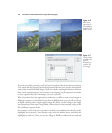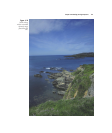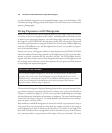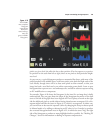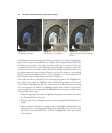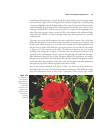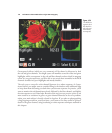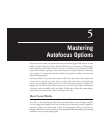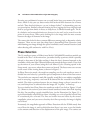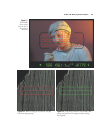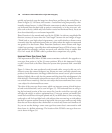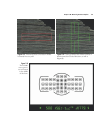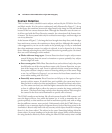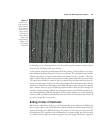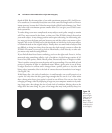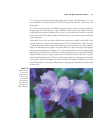Focusing was problematic because our eyes and brains have poor memory for correct
focus, which is why your eye doctor must shift back and forth between sets of lenses
and ask “Does that look sharper—or was it sharper before?” in determining your cor-
rect prescription. Similarly, manual focusing involves jogging the focus ring back and
forth as you go from almost in focus, to sharp focus, to almost focused again. The lit-
tle clockwise and counterclockwise arcs decrease in size until you’ve zeroed in on the
point of correct focus. What you’re looking for is the image with the most contrast
between the edges of elements in the image.
The camera also looks for these contrast differences among pixels to determine relative
sharpness. There are two ways that sharp focus is determined: Phase Detection (used
when framing your image through the optical viewfinder) and Contrast Detection (used
when shooting stills and movies with Live View).
Phase Detection
The 39 autofocus sensors of Nikon’s new Multi-CAM 4800DX autofocus module are
located in the “floor” of the mirror box, just under the flip-up mirror, which is partially
silvered so that most of the light reaching it from the lens is bounced upwards to the
viewfinder, while some light is directed downward towards the focus sensors. If you lock
up the mirror of your camera (using the Lock Mirror Up for Cleaning option in the
Setup menu), you can see where these sensors are located. The focus zones cover an area
on the center of the viewing frame, as shown in Figure 5.1.
In Phase Detection mode, the autofocus sampling area for each autofocus sensor is
divided into two halves by a prism-like optical component in front of the focus sensor.
The two halves are compared, much like (actually, exactly like) a two-window rangefinder
used in surveying, weaponry—and non-SLR cameras like the venerable Leica M film
models. The relative positions between the two images change as focus is moved in or
out, until sharp focus is achieved when the images are “in phase,” or lined up.
You can visualize how Phase Detection autofocus works if you look at Figures 5.2 and
5.3. (However, the action of your camera’s actual autofocus sensors don’t look anything
like this; I’m providing a greatly simplified view just for illustration.) In Figure 5.2, a
typical horizontally oriented focus sensor is looking at a series of parallel vertical lines
in a weathered piece of wood. The lines are broken into two halves by the sensor’s
rangefinder prism, and you can see that they don’t line up exactly; the image is slightly
out of focus.
Fortunately, the rangefinder approach of Phase Detection tells the D7000 exactly how
out of focus the image is, and in which direction (focus is too near, or too far) thanks
to the amount and direction of the displacement of the split image. The camera can
David Busch’s Nikon D7000 Guide to Digital SLR Photography134



